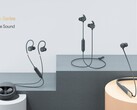Apple’s AirPods are a very popular device. And for good reason. They sound great, pair easily and are reasonably affordable. It is little wonder that they have sold in excess of 45 million units since launch. But as we pointed out yesterday, although emitting low levels of non-ionised radiation through the electromagnet field that they generate, they are situated in a particularly exposed part of the body. Our ear canals don’t have the bone of our skulls protecting them and these things sit close to delicate tissues, including the brain.
We came across an interesting article written by Graham Ryan at Synchro explaining why he decided to stop wearing Apple’s AirPods. According to Ryan, he noted anecdotally that he was feeling lightheaded and a little moody after wearing his AirPods, so he decided to investigate the effects of low-frequency electromagnetic fields (LF-EMFs), just like those emitted by AirPods. He found considerable evidence supporting the potential side-effects of LG-EMFs that could account for his experience wearing AirPods.
After conducting some testing of his own using an EMF meter, Ryan observed that the AirPods produced the highest average EMF intensity of all the headphones he tested. Given people’s satisfaction with the Bluetooth stability and ease of connectivity of Apple’s AirPods, that should probably come as no surprise. But there could be a price to be paid for this in terms of one’s health. After his testing Ryan concludes that wired in-ear buds produce the least amount of EMF intensity.
Speaking to The Daily Mail about the potential hazards of using in-ear Bluetooth earphones like Apple’s AirPods, University of California, Berkeley community health professor Dr Joel Moskowitz had this to say:
“[Apple’s AirPods, for example] communicate with one another using a magnetic induction field, a variable magnetic field [one] sends through your brain to communicate with the other...Since Bluetooth tends to be low-intensity it could open the blood-brain barrier which evolved to keep large molecules out of the brain...From a precautionary standpoint, I would argue you shouldn’t experiment with your brain like this by keeping these kind of wireless headphones on your head or in your ears.”
The scientific evidence may not be conclusive, but with around 250 highly regarded scientists in agreement that we should be exercising greater caution with our use of wireless technology, particularly when in close proximity to the brain, caution is warranted. At the very least, minimizing the use in-ear wireless headphones like AirPods is probably a good approach. Or to be safer still, switching back to wired headphones could be the surest bet. If your smartphone still has headphone jack, that is.


 Deutsch
Deutsch English
English Español
Español Français
Français Italiano
Italiano Nederlands
Nederlands Polski
Polski Português
Português Русский
Русский Türkçe
Türkçe Svenska
Svenska Chinese
Chinese Magyar
Magyar















